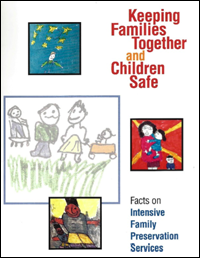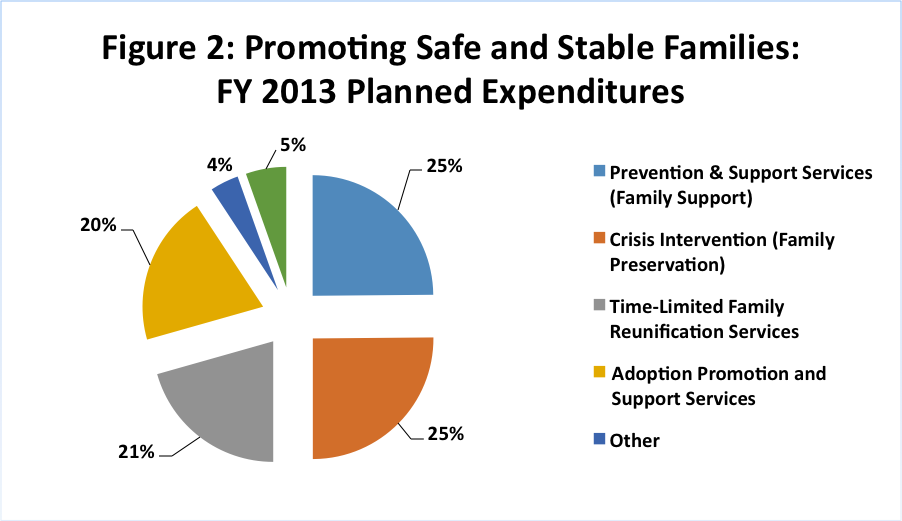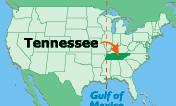 The following case study appeared in the Facts on Intensive Family Preservation Services packet that was written and produced by the Edna McConnell Clark Foundation in 1994.
The following case study appeared in the Facts on Intensive Family Preservation Services packet that was written and produced by the Edna McConnell Clark Foundation in 1994.
The case involves a family in which a child was at risk of psychiatric hospitalization.
The Brown Family
Buffalo, New York
At age 11, Sam Brown burned down his neighbor’s garage and was sent away to a residential youth facility in upstate New York. Two years later he returned home. The adjustment wasn’t easy. Sam was fighting with his two younger brothers constantly and their mother was having a difficult time handling them. Sam’s dad worked at night and was reluctant to discipline the children, fearing he would lose his temper.
With all three boys home from school for summer vacation tensions in the house mounted. One afternoon, while’ playing outside, Sam and his nine-year-old brother, Frank, got into a violent battle. When Sam began choking Frank, a neighbor called the police. Sam, accompanied by his mother, was taken by the police to the psychiatric emergency room of the Erie County Medical Center.
The hospital called in a caseworker from the Home Based Crisis Intervention Program at Buffalo General Hospital, which works with kids from 5 to 18 years old. The program caseworker, trained in psychiatric nursing, drove Sam and his mother, Anne, home and returned the next morning to begin working with the family.
Over a six-week period the caseworker spent almost every other day with the family and was able to closely observe their behavior. His first discovery was that Sam was not always the instigator of the fights with his brothers. Frank, the middle son, often started a brawl and then complained to his mother that Sam was to blame. While Sam was away, Frank had assumed the role of “number one son” and was upset about relinquishing this status to his older brother. The caseworker made Anne aware that Frank was frequently baiting Sam and that she needed to direct her discipline toward all three boys and not just her oldest son.
The caseworker counseled Anne at home and during frequent phone conversations. They worked on building her confidence in her parenting skills and her ability to take charge when a fight broke out between her sons. “Anne had good parenting skills,” the caseworker recalls. “What she needed was a lot of reassurance that she could handle the kids.”
With the help of the caseworker, Anne and her husband, Raymond, devised behavioral charts to identify a few things that they wanted their sons to do, such as going to bed on time and getting along better. Each week, the boys were rewarded with stars and points for what they’d accomplished, or punished with an early bedtime or no TV when they did not follow family rules. Sometimes the caseworker would treat the boys to dinner or a day in the park for doing well. Eventually the worker was able to transfer this responsibility to the parents, especially Raymond, who was encouraged to spend more quality time with his sons.
The caseworker concentrated on helping both parents to build their self-esteem. Anne frequently called about problems at home. “She’d panic if the boys kept fighting or refused to listen to her,” the caseworker said. “I’d give her reassurance that it was O.K. for her to do certain things to discipline the kids, such as separating them from each other until things cooled down.”
Anne had been managing the boys on her own and needed more of her husband’s support, but his own lack of confidence had kept him uninvolved. “Raymond had a negative image of himself I think I was probably one of the first people who really listened to what he had to say. He cared a lot about his family; he just needed to know that he was needed and that he and his wife had to work together.”
The younger boys responded well to the behavioral charts. Sam still had a difficult time controlling his temper and getting along, but he worked hard and showed some improvement. When school reopened, tensions at home eased and several months after counseling ended, the family was still together and doing well. Arrangements were made with other agencies to coordinate additional social services that the family still needed, such as a special education program for Sam, welfare benefits, and supplemental employment assistance.
“When I began this case, I had some doubts as to whether I was going to be successful,” the counselor recalls. “Sam was acting out and fighting a lot. I came close to bringing him back to the hospital a few times. By working with Anne, Raymond, and the boys as a family, we managed to bring everyone together. What became critical to Sam’s progress was giving him the message that he wasn’t going to be sent away again, no matter what he did. He may have tested them by behaving badly; he just wanted to be sure they really wanted him around.”
_______________
Posted by Priscilla Martens, Executive Director, National Family Preservation Network



